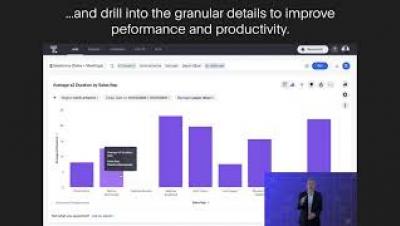Systems | Development | Analytics | API | Testing
ThoughtSpot
Dining with data: A Q&A with OpenTable's Senior Vice President of Data and Analytics Grant Parsamyan
For more than 20 years, OpenTable has connected foodies and novice diners with the restaurants they love. But how does its technology work on the back end? To make a long story short: data. Beyond the app and website, OpenTable provides restaurants with software that manages their floor plans, phone reservations, walk-ins, shift scheduling, turn times, and more.
Creating personalized meals with data: A Q&A with Daily Harvest Chief Algorithms Officer, Brad Klingenberg
It is becoming increasingly difficult to standardize taste. The myriad culinary preferences and gastric demands of the American population are reflected in the $997B valuation of the U.S. packaged food market in 2020. There has also been a push in recent years to augment trips to the grocery store with at-home meal kits and food delivery services, a trend further accelerated by the onset of quarantine restrictions.
Why dashboards don't deliver on promised business value
Modern data and analytics leaders know that every business user is different. No two marketers or finance managers will use data in exactly the same way because no two share the same contextual view or understanding of the business. Their challenges are as nuanced as they are complex. And they need insights tailored to their specific needs if they are to be successful at solving business problems with data. Unfortunately, traditional BI tools treat everyone like carbon copies.
ThoughtSpot for Adobe Analytics
ThoughtSpot for ServiceNow Analytics
ThoughtSpot for Sales Analytics
Can you achieve self-service analytics amid low data literacy?
Customers wanting to drive self-service analytics as part of creating a data-driven organization will often ask, “Can we achieve self service analytics, when our work force has low data literacy?” Or they might say they are not ready for self-service analytics, incorrectly thinking they need first to improve data literacy. But the two are inextricably linked. I liken it to teaching a child to read without giving them any books on which to build their skills.
ThoughtSpot Success Series #9 - Group Design, Privileges & Sharing
Transforming supply chain and logistics analytics at Avnet with ThoughtSpot and Azure Synapse
Supply chain and logistics operations can be a company's biggest source of financial risk or competitive advantage. The key is reconciling external supplier data like tariff and shipping information with internal data to deliver insights across teams and geographies.











